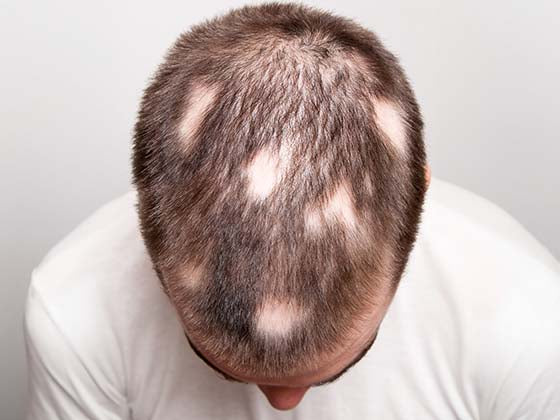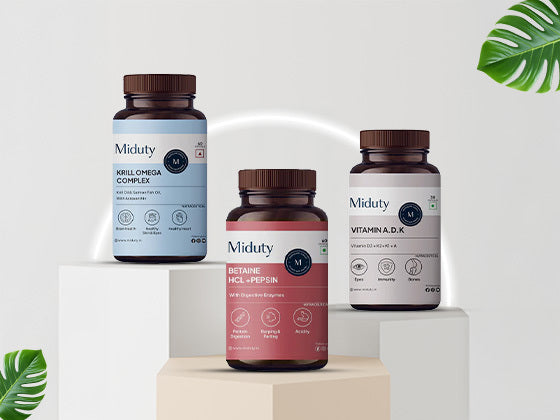Acne scars can be a persistent concern for many men, affecting both appearance and confidence. While there are numerous treatment options available, it can be challenging to determine the most effective ones. This guide highlights the top acne scar treatments every man should consider, offering targeted solutions to improve skin texture and restore a smoother, more even complexion.
Understanding Acne Scars: Types, Causes, and Impact on Men's Skin

Acne scars are a common aftermath of severe acne, leading to permanent changes in skin texture and appearance. These scars can be categorized into atrophic scars, which cause depressions in the skin, and hypertrophic scars, which result in raised areas. Factors contributing to scar formation include the severity of acne, delayed treatment, genetic predisposition, and habits like picking or squeezing pimples. For men, acne scars can significantly impact self-esteem and confidence, making it crucial to understand their nature and seek appropriate treatments to manage and reduce their appearance.
Types of Acne Scars: From Ice Pick to Boxcar Scars

Acne scars result from the inflammatory response to acne lesions and can be classified into two main types- atrophic scars and hypertrophic scars.
A. Atrophic Scars
Atrophic scars are characterized by a loss of tissue, which results in depressions or indentations on the skin. These scars are more common on the face and can be further divided into three subtypes:
-
Ice Pick Scars
-
Appearance: Ice pick scars are narrow, deep scars that penetrate into the dermis. They resemble the puncture marks made by a sharp object, hence the name.
-
Characteristics: These scars are typically less than 2mm in diameter and have steep edges that make the skin look as if it has been pierced with an ice pick.
-
Treatment Challenges: Due to their depth and narrowness, ice pick scars are difficult to treat. Common treatments include punch excision, chemical peels, and laser resurfacing.
-
Boxcar Scars
-
Appearance: Boxcar scars are broad, box-like depressions with well-defined edges. They are wider than ice pick scars and have more angular, sharp edges.
-
Characteristics: These scars can range in depth and usually have a flat base. They are caused by a loss of collagen and tissue beneath the skin.
-
Treatment Options: Treatments for boxcar scars include dermal fillers, laser therapy, micro needling, and chemical peels. Subcision, a minor surgical procedure, can also help in some cases.
-
Rolling Scars
-
Appearance: Rolling scars create a wave-like, uneven appearance on the skin. They are characterized by broad depressions with sloping edges.
-
Characteristics: These scars occur when fibrous bands of tissue develop between the skin and the underlying subcutaneous tissue, pulling the skin down and creating a rolling or undulating appearance.
-
Treatment Approaches: Subcision is often used to break up the fibrous bands. Other treatments include laser resurfacing, dermal fillers, and micro needling.
B. Hypertrophic Scars
Hypertrophic scars are the result of an excess of tissue and are characterized by raised, thickened areas of skin. Unlike atrophic scars, hypertrophic scars do not extend beyond the boundary of the original wound or acne lesion. They are less common on the face but can frequently occur on the chest and back.
-
Appearance: Hypertrophic scars appear as raised, firm masses of tissue that can be red or pink in color. They are often more pronounced in areas where the skin is under tension.
-
Characteristics: These scars are caused by an overproduction of collagen during the healing process. Unlike keloids, another type of raised scar, hypertrophic scars remain within the boundaries of the original wound.
-
Treatment Options: Treatments for hypertrophic scars include steroid injections, silicone gel sheets, laser therapy, and cryotherapy. In some cases, surgical removal followed by postoperative treatments to prevent recurrence may be recommended.
Understanding the specific types of acne scars is crucial for selecting the most appropriate and effective treatments. Atrophic scars, including ice pick, boxcar, and rolling scars, are best treated with a combination of techniques tailored to the scar type and severity. Hypertrophic scars require different approaches focusing on reducing the excess tissue and preventing further collagen buildup. Consulting with a dermatologist can help determine the best treatment plan based on individual skin characteristics and scar types.
What Causes Acne Scars in Men: Insights into the Scarring Process

Acne scars are a common consequence of the skin's natural healing process following inflammation from acne lesions. The formation of these scars is influenced by various factors, each contributing differently to the severity and type of scarring.
A. Inflammatory Acne
-
Severity of Acne:
-
Cystic Acne: This is a severe form of acne characterized by large, inflamed cysts that penetrate deep into the skin. Due to the extensive inflammation and damage to the deeper layers of skin, cystic acne is more likely to result in scarring.
-
Nodular Acne: Similar to cystic acne, nodular acne involves large, hard bumps under the skin, which can also cause significant inflammation and scarring.
-
Inflammation: Inflammatory acne leads to an immune response that can damage skin tissue. The body's attempt to repair this damage often results in an imbalance in collagen production, leading to the formation of scars.
B. Delayed Treatment
-
Prolonged Inflammation: When acne is not treated promptly, the inflammation persists for longer periods, increasing the likelihood of tissue damage and scarring.
-
Infection Risk: Untreated acne lesions can become infected, exacerbating inflammation and the potential for scarring.
-
Scar Formation: Timely treatment can reduce the severity of acne and minimize the extent of scarring. Delayed treatment allows the acne to worsen, making scars more likely and potentially more severe.
C. Genetic Predisposition
-
Family History: Genetics play a significant role in determining an individual's propensity for scarring. If a person has a family history of acne scars, they are more likely to develop scars themselves.
-
Skin Healing Response: Genetic factors influence how the skin heals after acne. Some individuals naturally produce more collagen or have an exaggerated healing response, leading to hypertrophic or atrophic scars.
D. Picking and Squeezing
-
Physical Trauma: Picking, squeezing, or popping acne lesions introduces additional trauma to the skin. This physical manipulation can rupture the walls of acne lesions, spreading bacteria and increasing inflammation.
-
Delayed Healing: Damaging the skin through picking or squeezing disrupts the natural healing process, often leading to more pronounced and deeper scars.
-
Infection: Manipulating acne can introduce bacteria into the lesions, causing infections that further inflame the skin and increase the risk of scarring.
E. Skin Type
-
Melanin and Hyperpigmentation:
-
Darker Skin Tones: Individuals with darker skin tones have higher melanin levels, which can lead to post-inflammatory hyperpigmentation (PIH). While PIH is not a true scar, it results in dark spots that can persist for a long time, making the scars more noticeable.
-
Lighter Skin Tones: People with lighter skin tones may develop more prominent scars due to the contrast between the scar tissue and their natural skin color. Additionally, they may be more prone to atrophic scars.
-
Collagen Production: Skin type also affects collagen production. For instance, some skin types may produce too much collagen in response to inflammation, resulting in hypertrophic scars, while others may produce too little, leading to atrophic scars.
Acne scars result from a complex interplay of factors, including the severity of acne, timing of treatment, genetic predisposition, physical manipulation of lesions, and skin type. Understanding these factors is essential for preventing and treating acne scars effectively. Early intervention, proper skincare, and avoiding the temptation to pick or squeeze acne can significantly reduce the risk of scarring. For those prone to scarring, seeking professional dermatological advice can help manage acne and minimize long-term skin damage.
The Emotional Toll of Acne Scars on Men: Addressing Mental Health Concerns

Acne scars can be more than a cosmetic concern for men. Studies link them to significant mental health effects like anxiety, depression, and low self-esteem. This can cause men to withdraw from social situations or activities due to self-consciousness about their scars. Recognizing this emotional toll is important. Treatment for acne scars shouldn't just focus on the physical blemishes, but also address the potential impact on mental well-being for a more holistic approach.
Treatment Options for Men: From Topical Treatments to Invasive Procedures

Acne scars can be a persistent issue, but various treatment options are available to address them, ranging from non-invasive topical treatments to more invasive procedures. Here’s an overview of the different treatments and their effectiveness for men:
|
Treatment Type |
Usage |
Effectiveness |
|
Topical Treatments |
||
|
Retinoids |
Promote cell turnover, stimulate collagen production |
Best for mild to moderate scars; reduces hyperpigmentation, refines skin texture |
|
AHAs/BHAs |
Exfoliate skin, remove dead skin cells, promote new skin growth |
Effective for superficial scarring, improves overall skin tone and texture |
|
Vitamin C Serums |
Reduce hyperpigmentation, boost collagen production |
Works well for discoloration and early-stage scars |
|
Silicone Gels/Sheets |
Flatten and soften hypertrophic scars |
Particularly effective for raised scars, improves texture over time |
|
Chemical Peels |
||
|
Light Peels |
Use mild acids like glycolic or salicylic acid to exfoliate outer layer of skin |
Suitable for superficial scars, improves overall skin brightness |
|
Medium Peels |
Use trichloroacetic acid (TCA) to penetrate deeper into the skin |
Effective for moderate scarring and discoloration |
|
Deep Peels |
Use phenol for severe scarring |
Can significantly improve deeper scars; requires longer recovery time |
|
Microdermabrasion and Dermabrasion |
||
|
Microdermabrasion |
Non-invasive procedure using fine crystals to exfoliate top layer of skin |
Best for mild scarring, improves skin texture |
|
Dermabrasion |
Intensive procedure that sands down the skin's surface |
Effective for deeper scars; involves longer recovery period |
|
Micro needling |
Use fine needles to create tiny punctures, stimulating collagen production |
Suitable for various types of atrophic scars; results improve with multiple sessions |
|
Laser Therapy |
||
|
Ablative Lasers |
Remove top layer of skin, allowing new skin to form |
Effective for severe scarring; involves significant downtime |
|
Non-Ablative Lasers |
Stimulate collagen production without removing top layer of skin |
Best for moderate scars with minimal downtime |
|
Fillers |
Injectable fillers raise atrophic scars to level of surrounding skin |
Provides immediate improvement; effects are temporary, requiring repeated treatments |
|
Subcision |
Minor surgical procedure to break up fibrous bands under the skin |
Effective for rolling scars; often combined with other treatments |
|
Surgical Options |
||
|
Punch Excision |
Surgically remove individual scars, followed by suturing or skin grafting |
Best for deep ice pick and boxcar scars; results in a new, less noticeable scar |
|
Punch Elevation |
Elevate base of scar to level of surrounding skin |
Effective for boxcar scars |
The best treatment for acne scars often involves a combination of therapies tailored to the specific type and severity of scars. Men should consult with a dermatologist to develop a personalized treatment plan that may include both non-invasive and invasive procedures. Early intervention and a consistent skin care routine can also enhance the effectiveness of these treatments, leading to better skin health and improved appearance.
Topical Treatments: Creams, Serums, and Gels for Scar Fading

Topical treatments, such as creams, serums, and gels, are essential for managing and fading acne scars due to their accessibility, ease of use, and effectiveness. These treatments are readily available over-the-counter and can be easily incorporated into daily skincare routines, making them a convenient option for many. They are also cost-effective compared to professional treatments like laser therapy or micro needling. Topical treatments allow for targeted treatment of specific skin concerns.
-
Retinoids, for instance, promote cell turnover and collagen production, helping to reduce the appearance of atrophic scars. Dermaceutic Mela Cream is a great recommendation.
-
AHAs and BHAs exfoliate the skin, improving texture and tone. Bellacos Healthcare AHA BHA Acne Gel is a potent yet gentle solution for a clearer skin.
-
Vitamin C serums reduce hyperpigmentation and boost collagen. C-Bliz Vitamin C 20% Serum is ideal for daily use.
-
Silicone gels and sheets are particularly effective for flattening and softening hypertrophic scars.
Regular use of these topical treatments can prevent further damage, promote healthier skin, and enhance the overall appearance of scarred areas. By improving skin texture and reducing discoloration, topical treatments help boost confidence and overall skin health. Consulting with a dermatologist can help tailor these treatments to individual needs, maximizing their benefits.
Dermatological Procedures: Laser Therapy, Micro needling, and Chemical Peels

Dermatological procedures such as laser therapy, micro needling, and chemical peels are vital for effectively treating acne scars, providing deeper and more significant results than topical treatments alone. These advanced treatments enhance skin texture, promote collagen production, and reduce scar visibility, leading to long-lasting improvements.
-
Laser Therapy:
-
Precision: Targets specific scar tissue with high accuracy.
-
Customization: Various laser types (ablative and non-ablative) tailored to scar severity and skin type.
-
Micro needling:
-
Collagen Stimulation: Micro-injuries trigger natural healing and collagen production.
-
Versatility: Suitable for various scar types and skin tones.
-
Chemical Peels:
-
Exfoliation: Removes damaged outer layers, revealing smoother skin.
-
Skin Renewal: Improves texture and tone by promoting new skin growth.
These procedures, performed by dermatologists, offer advanced care for those with persistent or severe acne scars, providing enhanced results and boosting overall skin health and confidence.
Surgical Options: Subcision and Punch Excision for Severe Scarring

Surgical options such as subcision and punch excision are critical for treating severe acne scars that do not respond well to less invasive treatments. These procedures offer targeted and effective solutions for deep and persistent scarring, providing significant improvements in skin texture and appearance.
-
Subcision:
-
Fibrous Band Release: Subcision involves using a needle to break the fibrous bands pulling the skin down, which helps elevate depressed scars.
-
Collagen Production: The process stimulates collagen production, leading to gradual skin smoothing and improvement.
-
Punch Excision:
-
Scar Removal: Punch excision removes individual deep scars, such as ice pick and boxcar scars, by cutting them out and closing the wound with stitches or skin grafts.
-
New Skin Formation: The procedure replaces the scarred area with new, less noticeable skin, significantly reducing the visibility of severe scars.
These surgical options, performed by skilled dermatologists, are essential for achieving substantial scar reduction in cases of severe acne scarring, resulting in enhanced skin appearance and increased confidence.
Lifestyle Changes and Home Remedies for Men's Acne Scar Management

Managing acne scars can be a challenging task, but incorporating specific lifestyle changes and home remedies can significantly enhance the healing process and improve skin appearance. For men, who might often overlook detailed skincare routines, these practical and natural approaches provide effective ways to tackle acne scars and promote overall skin health.
Key lifestyle changes that can be incorporated are:
-
A diet rich in antioxidants, vitamins, and minerals can promote skin health and healing. Incorporate foods like fruits, vegetables, nuts, and fish to boost collagen production and reduce inflammation.
-
Drinking plenty of water helps maintain skin elasticity and supports overall skin health.
-
Regular use of sunscreen can prevent scars from darkening and reduce further skin damage.
-
Refrain from picking or squeezing acne lesions to minimize the risk of scarring.
Certain Home Remedies that can be done to combat acne by men are:
-
Aloe Vera: Applying fresh aloe vera gel can soothe the skin and promote healing due to its anti-inflammatory and moisturizing properties.
-
Honey: Honey’s natural antibacterial and healing properties can help reduce scar visibility. Apply a thin layer to scars and leave it on for 20-30 minutes before rinsing.
-
Lemon Juice: Lemon juice can lighten scars and promote skin regeneration. Apply diluted lemon juice to scars for 10-15 minutes and rinse off (use caution with sensitive skin).
-
Coconut Oil: Massaging coconut oil into the skin can hydrate and improve the appearance of scars thanks to its fatty acids and vitamins.
Implementing these lifestyle changes and home remedies can significantly aid in managing and reducing acne scars, leading to healthier and more resilient skin for men.
Diet and Nutrition: Foods That Promote Skin Healing and Renewal

A well-balanced diet rich in specific nutrients can significantly enhance skin healing and promote renewal, especially in managing acne and its after-effects.
Certain key Nutrients and their food sources are:
-
Vitamin C is essential for collagen synthesis, which helps in skin repair and regeneration. Citrus fruits (oranges, lemons), strawberries, bell peppers, broccoli, and kiwis are great sources.
-
Vitamin E acts as an antioxidant, protecting skin cells from damage and supporting skin healing. Nuts (almonds, hazelnuts), seeds, spinach, and avocados are great sources.
-
Omega-3 Fatty Acids reduce inflammation and promote healthy skin cell membranes. Fatty fish (salmon, mackerel, sardines), flaxseeds, chia seeds, and walnuts are excellent sources.
-
Zinc plays a crucial role in immune function and wound healing. Meat, shellfish, legumes, seeds, nuts, and whole grains are great sources.
-
Vitamin A promotes skin cell production and repair. Carrots, sweet potatoes, spinach, and kale are great sources.
-
Antioxidants protect skin cells from oxidative stress and promote healing. Berries (blueberries, raspberries), dark chocolate, pecans, and artichokes are highly recommended.
-
Protein is essential for the repair and regeneration of skin tissue. Lean meats, poultry, fish, eggs, dairy products, legumes, and tofu can be consumed to increase protein intake.
-
Water maintains skin hydration and elasticity. Adequate daily water intake through beverages and water-rich foods like cucumbers and watermelon is recommended.
Tips for Incorporating These Foods:
-
Balanced Meals: Ensure each meal includes a variety of these nutrient-rich foods to cover different aspects of skin health.
-
Snacking Smart: Opt for nuts, seeds, and fruits as snacks to provide a steady supply of skin-friendly nutrients throughout the day.
-
Hydration: Drink plenty of water and include hydrating foods to keep your skin moist and supple.
-
Healthy Fats: Incorporate sources of omega-3 fatty acids, like fish and flaxseeds, into your diet regularly to combat inflammation.
By focusing on a diet rich in these nutrients, you can support your skin's natural healing processes, reduce inflammation, and promote the renewal of healthy skin cells, aiding in the management and reduction of acne scars.
Skincare Routine: Cleansing, Exfoliating, and Moisturizing Tips

A consistent and effective skincare routine is essential for managing acne and promoting clear, healthy skin. Here are key steps and tips for men to incorporate into their daily regimen.
-
Cleansing
Choosing the Right Cleanser is extremely important. Look for the following ingredients in the cleansers.
-
Salicylic Acid: Helps to unclog pores and reduce inflammation. Look for cleansers with salicylic acid to combat acne. Verso Deep Cleanse With Salicylic Acid is a great choice.
-
Benzoyl Peroxide: Kills acne-causing bacteria. Ideal for more severe acne. Benzac AC 5% Gel Wash is highly recommended.
Also, for sensitive skin, use a mild, non-comedogenic cleanser like Cetaphil Oily Skin Cleanser to avoid irritation. Cleanse your face twice a day to remove dirt, oil, and impurities that can clog pores and cause breakouts. Use lukewarm water to avoid stripping natural oils and do gentle, circular motions with your fingertips; and avoid scrubbing harshly.
-
Exfoliating
Exfoliate 2-3 times a week to remove dead skin cells and prevent clogged pores. Over-exfoliating can irritate the skin and exacerbate acne. Choosing the Right Exfoliant is extremely crucial. Look for the cleansers containing the following ingredients.
-
Chemical Exfoliants: AHAs (e.g., glycolic acid) and BHAs (e.g., salicylic acid) are effective for acne-prone skin. Gunam Daily Liquid Exfoliant can be incorporated into the skincare regimen.
-
Physical Exfoliants: Use gentle physical exfoliants with fine particles if preferred, but be cautious to avoid irritation.
Apply the exfoliant evenly across the face, focusing on acne-prone areas. Be gentle around active breakouts to prevent further irritation.
-
Moisturizing
Choose non-comedogenic, oil-free moisturizers to hydrate the skin without clogging pores. Use lightweight moisturizers as they ideal for oily and acne prone skin. Certain lightweight moisturizers are:
-
Gel-based Moisturizers- Hydrafar Watergel Moisturizer is an excellent choice.
-
Water-based Moisturizers- Re'equil Oil Free Moisturizer is the go to solution for oily/combination skin.
Also, apply moisturizer every day, even if your skin feels oily. Proper hydration helps maintain skin barrier function and prevent overproduction of sebum. Certain additional ingredients to look for in skincare products are:
-
Hyaluronic Acid: Provides lightweight hydration without clogging pores.
-
Niacinamide: Reduces inflammation and helps regulate oil production.
Continue reading to know certain additional tips:
-
Sun Protection: Use a broad-spectrum SPF 30+ sunscreen daily to protect against UV damage and prevent acne scars from darkening. Sunstop Acne Advanced Sun Protection Gel SPF 30 PA+++ is highly recommended.
-
Consistency: Stick to your routine consistently for the best results. Skin improvements often take time.
-
Avoid Touching Your Face: Minimize touching your face to reduce the transfer of bacteria and oils that can worsen acne.
-
Healthy Lifestyle: Maintain a balanced diet, stay hydrated, and manage stress to support overall skin health.
By following these cleansing, exfoliating, and moisturizing tips, men can effectively manage acne, reduce breakouts, and promote clearer, healthier skin.
Home Remedies: Natural Solutions for Acne Scar Reduction

Natural home remedies can be a gentle and effective way to reduce the appearance of acne scars. These remedies often use ingredients that are easily accessible and have skin-healing properties. Here are some popular and effective natural solutions for acne scar reduction:
|
Remedy |
Properties |
Usage |
|
Green Tea |
Rich in antioxidants that help to repair and protect the skin. |
Brew a cup of green tea, let it cool, and use a cotton ball to apply it to the scars. Alternatively, use cooled green tea bags directly on the scars. Leave it on for 10-15 minutes before rinsing off. Use daily. |
|
Honey |
Has natural antibacterial properties and is a humectant, meaning it helps retain moisture in the skin. It also promotes tissue regeneration. |
Apply a thin layer of raw honey to the scars and leave it on for 20-30 minutes before rinsing off with warm water. This can be done daily. |
|
Lemon Juice |
Rich in vitamin C and has natural bleaching properties that can help lighten scars and promote new skin cell growth. |
Dilute lemon juice with equal parts water. Apply the mixture to scars with a cotton ball, leave it on for 10-15 minutes, then rinse with cool water. Use caution with sensitive skin, and always apply sunscreen afterward as lemon juice can make your skin more photosensitive. |
|
Turmeric |
Has anti-inflammatory and antioxidant properties that help reduce scarring and promote healing. |
Mix turmeric powder with a small amount of water or honey to form a paste. Apply the paste to the scars and leave it on for 20-30 minutes before rinsing off. Use 2-3 times a week. |
|
Aloe Vera |
Known for its anti-inflammatory and moisturizing properties. It helps soothe irritated skin and promotes healing. |
Apply fresh aloe vera gel directly to the scars. Leave it on for 30 minutes, then rinse with lukewarm water. Use twice daily for best results. |
|
Apple Cider Vinegar |
Has astringent properties that help to tighten the skin and reduce the appearance of scars. It also helps balance the skin's pH level. |
Mix one part apple cider vinegar with three parts water. Apply the solution to the scars with a cotton ball and leave it on for 10-15 minutes before rinsing off. Use once daily. |
|
Coconut Oil |
Rich in fatty acids and antioxidants, which help to heal and hydrate the skin. It also promotes collagen production. |
Gently massage a small amount of virgin coconut oil into the scars. Leave it on overnight and wash off in the morning. Repeat daily. |
|
Baking Soda |
Acts as a gentle exfoliant and helps to balance the pH of the skin. |
Mix a teaspoon of baking soda with two teaspoons of water to form a paste. Apply the paste to the scars, leave it on for a few minutes, then rinse off with lukewarm water. Use 2-3 times a week. |
|
Potato Juice |
Contains vitamins and minerals that help to lighten scars and promote skin regeneration. |
Grate a potato and extract its juice. Apply the juice to the scars using a cotton ball. Leave it on for 20-30 minutes, then rinse off with water. Use daily for best results. |
By incorporating these natural home remedies into your skincare routine, you can help reduce the appearance of acne scars and promote healthier, clearer skin.
Professional Advice and Consultation for Men's Acne Scar Treatment

Seeking professional advice for acne scar treatment is crucial for men to achieve optimal results. Dermatologists can accurately diagnose the type and severity of scars and recommend personalized treatment plans, ensuring effective and targeted solutions. They also provide access to advanced treatments like laser therapy and micro needling, which require expert handling to avoid adverse effects. Professional consultation helps prevent potential skin damage from inappropriate at-home treatments and ensures the safe and effective use of powerful dermatological procedures, leading to better skin health and improved appearance.
Consulting a Dermatologist: Expert Guidance for Acne Scar Removal

Consulting a dermatologist is essential for effective acne scar removal, providing expert guidance tailored to individual skin needs. Dermatologists offer accurate diagnoses, distinguishing between various scar types and severities to recommend the most appropriate treatments. They have access to advanced, clinically proven procedures like laser therapy, micro needling, and chemical peels, ensuring safer and more effective results than over-the-counter options. Dermatologists can also customize treatment plans, minimizing the risk of adverse effects and optimizing skin healing. Their professional advice helps avoid common pitfalls of self-treatment, promoting better skin health and a clearer complexion.
Long-Term Care: Maintenance Tips for Keeping Acne Scars at Bay

Proper long-term care is crucial for maintaining clear skin and preventing the recurrence of acne scars. Here are some effective maintenance tips:
-
Consistent Skincare Routine
-
Daily Cleansing: Use a gentle, non-comedogenic cleanser twice daily to remove dirt, oil, and impurities.
-
Exfoliation: Exfoliate 2-3 times a week with a mild exfoliant to prevent clogged pores and promote skin renewal.
-
Sun Protection
-
Daily Sunscreen: Apply a broad-spectrum SPF 30+ sunscreen every day to protect scars from darkening and prevent new scars.
-
Protective Clothing: Wear hats and sunglasses to shield your face from direct sunlight.
-
Hydration and Moisturization
-
Hydrate: Drink plenty of water to keep your skin hydrated and maintain elasticity.
-
Moisturize: Use a non-comedogenic moisturizer daily to maintain skin barrier function and prevent dryness.
-
Healthy Lifestyle
-
Balanced Diet: Eat a diet rich in fruits, vegetables, lean proteins, and omega-3 fatty acids to support skin health.
-
Exercise: Regular physical activity improves circulation and promotes skin health.
-
Avoid Skin Picking
-
Hands Off: Avoid picking or squeezing pimples to prevent further skin damage and scarring.
-
Use Spot Treatments: Apply over-the-counter treatments to active acne instead of manipulating them.
-
Professional Treatments
-
Regular Check-ups: Visit a dermatologist regularly for professional advice and maintenance treatments.
-
Follow-up Procedures: Consider periodic professional treatments like chemical peels or micro needling to maintain skin texture and appearance.
-
Stress Management
-
Relaxation Techniques: Practice stress-reducing activities like yoga, meditation, or deep-breathing exercises to prevent stress-related acne flare-ups.
-
Adequate Sleep: Ensure you get enough sleep to help your skin repair and regenerate.
By incorporating these long-term care tips into your routine, you can effectively manage and prevent acne scars, promoting healthy, clear skin. Regular dermatologist consultations and a consistent skincare regimen are key to maintaining the results of initial treatments and keeping acne scars at bay.
Psychological Support: Addressing Body Image and Self-Esteem Issues

Psychological support is crucial for individuals dealing with body image and self-esteem issues, particularly those affected by visible skin conditions like acne scars. These concerns can significantly impact mental health, leading to anxiety, depression, and social withdrawal. Professional counselling and support groups provide a safe space for individuals to express their feelings and develop coping strategies. Cognitive-behavioral therapy (CBT) can help reframe negative thoughts and improve self-perception. Additionally, fostering a supportive environment with friends and family can enhance self-esteem and promote a more positive body image. Addressing these psychological aspects is essential for holistic healing and overall well-being.
Conclusion: Achieving Clear Skin and Boosting Confidence

Achieving clear skin and reducing the appearance of acne scars can significantly boost confidence and improve overall well-being. By understanding the types and causes of acne scars, and exploring effective treatments like laser therapy, micro needling, and chemical peels, men can take proactive steps towards healthier, smoother skin. With the right care and professional guidance, clear skin and renewed self-assurance are attainable goals.
































